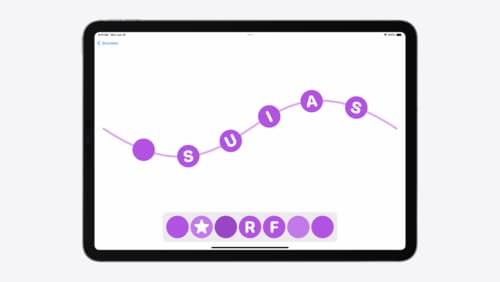state management swiftui
Asked on 2024-09-06
1 search
In the WWDC session titled "SwiftUI essentials," state management in SwiftUI is discussed in detail. SwiftUI uses a declarative approach to manage the state of views, which means that views are descriptions of what the current state of the UI should be. This approach eliminates boilerplate code and update bugs by automatically keeping the UI up to date as the view state changes over time.
Key concepts in SwiftUI state management include:
-
State: This is an internal source of data for a view. When you mark a view property with
@State, SwiftUI manages the storage and provides it back for the view to read and write. This is useful for simple state management within a single view. -
Binding: A binding creates a two-way reference to the state of another view. This is useful when you want to share state between views, allowing them to stay in sync.
-
ObservableObject: This is used for more complex state management where multiple views need to observe changes to a shared data model. An
ObservableObjectcan be used to notify views of changes to its properties.
For example, in the session, a view is described that uses state to keep track of a rating value, which can be incremented or decremented. SwiftUI automatically updates the UI when the state changes, and animations can be applied to these updates for a smoother user experience.
For more details, you can refer to the session SwiftUI essentials (08:50) where these concepts are explained.

What’s new in SwiftUI
Learn how you can use SwiftUI to build great apps for any Apple platform. Explore a fresh new look and feel for tabs and documents on iPadOS. Improve your window management with new windowing APIs, and gain more control over immersive spaces and volumes in your visionOS apps. We’ll also take you through other exciting refinements that help you make expressive charts, customize and layout text, and so much more.

Enhance your UI animations and transitions
Explore how to adopt the zoom transition in navigation and presentations to increase the sense of continuity in your app, and learn how to animate UIKit views with SwiftUI animations to make it easier to build animations that feel continuous.

SwiftUI essentials
Join us on a tour of SwiftUI, Apple’s declarative user interface framework. Learn essential concepts for building apps in SwiftUI, like views, state variables, and layout. Discover the breadth of APIs for building fully featured experiences and crafting unique custom components. Whether you’re brand new to SwiftUI or an experienced developer, you’ll learn how to take advantage of what SwiftUI has to offer when building great apps.
